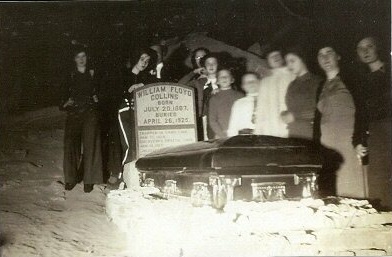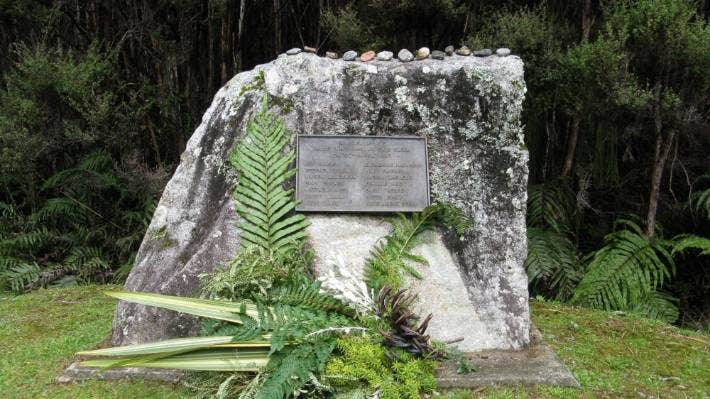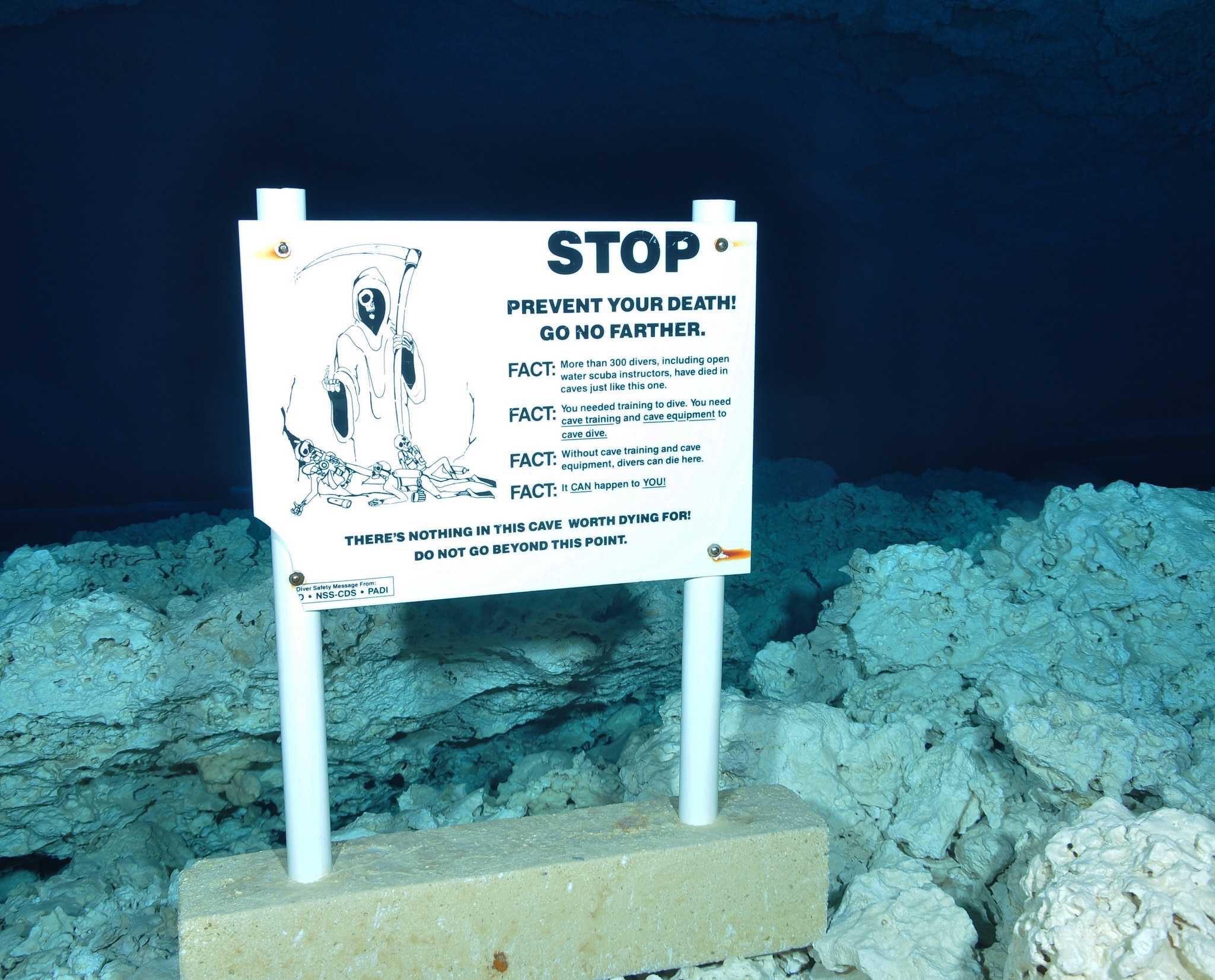Beware: You should never explore wild caves alone or without proper gear. Consider getting in touch with a Grotto of the National Speleological Society at www.caves.org or a qualified cave club. These groups are skilled and will train you. Without sufficient knowledge, preparation, and equipment, cave exploring can lead to serious injury or death.
According to known statistics, about three cavers die each year. While there are some more famous caving deaths than others, the truth is that the list is constantly growing. Spelunking deaths don’t come up often in normal conversations, but among cavers, it’s a grim reality.
Although there have been caving fatalities since the Bronze Age, scholars think that today’s cavers are far more knowledgeable about avoiding these mishaps than their forebears were. But as some of these more famous caving tragedies show, this can still be a dangerous hobby.
Exploring a cave can be exciting, if everything (or most things) go right. If not, things can quickly turn for the worse, making a simple trip into something horrifying.
Cave divers take risk to another level because of the inherent dangers that come with large bodies of water. Squeezing through tight spaces and uncharted chasms to explore, see incredible vistas, or perhaps even unearth some hidden treasure, numerous divers have failed to return from their trip.
This article is not meant to discourage anyone from exploring nature and learning proper techniques of caving and diving. We want to make it clear, however, that things can and do go wrong even when cavers enter the underground with the best intentions. Do your due diligence, travel safely, and please don’t end up on a list of famous deaths when you go caving.
What causes these spelunking deaths and injuries?
Lack of oxygen is often the main cause of caving deaths. This can happen when many individuals in a small area exhaust the oxygen supply faster than it can be replaced. Shut out from the outside world and surrounded by thick layers of rock, air and water are not always flowing freely in these environments.
When diving, an insufficient oxygen tank can be the culprit as well. However, deep diving and rapidly changing pressure can be fatal as well. As you’ll see in some of these stories, several of the more famous caving deaths were a result of drowning or suffocation.
A cave-in could potentially result in a cave death if a person is trapped beneath debris or other cave formations. Ultimately, if not rescued, the victim suffocates or starves to death.
Some would call spelunking an extreme sport, and considering the likelihood of deaths or injuries, it seems fair. However, there are always ways to play it safe. If you’re ready for it, continue reading to see what may happen if things don’t go as planned.
Flood in Mossdale Cavern
The Mossdale Caverns tragedy was one of the biggest tragedies in caving history. In England, 1967, a group of ten cavers set out to explore these caverns.
It was a Saturday morning. The 10 young people who walked from Conistone village were members of three caving clubs, and only two had explored Mossdale before. These two were Dave Adamson (26), the leader, and Geoff Boireau (24), both alumni at Leeds University.
John Ogden, Jim Cunningham and John Shepherd, all aged 21, were members of the Bolton-based Happy Wanderers Club. Finally, the other explorers included Colin Vickers (23), Bill Frakes (19), and Michael Ryan (17). This final group were members of the Bradford Pothole Club. Collette Lord (19), joined the Bolton three for the day, and Morag Forbes (22) was engaged to marry Adamson the following month.
Adamson’s 6 were not meant to return before midnight, while the other 4 departed early. But things took a swift turn for the worse shortly after 5 pm. Rain was falling, gradually at first, but suddenly became a torrent. Mossdale beck was rising fast, as one inch of rain fell in three hours. At 9 PM, Morag Forbes returned to the cave and found a lake of swirling water covering the entrance…
By 11:10 PM, cave rescuers were on their way. The Upper Wharfedale Fell Rescue Team had performed cave rescues before, but Mossdale Cavern was a place that was basically uncharted territory. Adding flooding was no minor complication.
Hundreds gathered and frantically dug a diversion ditch to build a 10 foot dam, 15 feet thick and 70 yards long. The ditch was 6 feet wide, 10 feet deep, and 100 yards long, and to have made all of this in one morning was quite a feat on its own. However, it was still not enough. Once the rescuers made their way inside, they found the bodies.
The first two bodies were jamming a passage, and just further ahead they found three others. The sixth, John Ogden, was not found.
The rescue report concluded: “Never has so much been done by so many people for such a small reward”, and 67 years after its discovery, Mossdale remains Britain’s biggest caving challenge.

Poganica Bay Stabbing
At first, this sounds like a murder mystery. In 2002, in a Croatian underwater cave, 54 meters below the water’s surface, the body of a diver was found. The diving mask was missing. In addition, a 30-centimeter knife protruded from his chest even though he was alone.
The authorities initially suspected a murder. However, they later concluded that the man actually killed himself by stabbing himself in the chest. It was assumed to be a suicide to avoid the pain of drowning. Imagining these last moments is enough to discourage me from going cave diving alone.
So how did they figure it out? Using information about the dive profile, and the map of the cave, experts were able to piece together the story from various clues.
The victim entered the water and reached a 50 meter depth without issues. However, upon reaching the bottom, he missed the exit funnel, instead accidentally entering a region called the shallow gallery. Due to low visibility, this area is often mistaken for an exit.
The body was found with the scuba cylinders empty, and the autopsy revealed several unmistakable signs of drowning. It was estimated that the efforts to find the exit lasted around 35 minutes before the diver got lost.
Nitrogen narcosis played a part as well in the end, which is known to cause loss of fine motor control and high-order mental skills and ultimately unconsciousness.
The Tragic Fate of Peter Verhusel in the Sterkfontein Caves
Peter Verhulsel and his friends explored the Sterkfontein Caves in South Africa in 1984. He swam off the trail several times before getting lost.
As he struggled to find his way back, Peter found a small island somewhere at the end of one passageway, where he pulled himself on to land. But his oxygen was just about running out at this point, and he was trapped. Peter could not swim out of the tunnels anymore, and was forced to sit here in the pitch-black cavern.
His friends were unable to locate him, and made their way out of the caves by this point to report him missing. The search began, to no avail.
Divers were said to have made it within 40 meters of Peter at one point during the search, but as he sat in the remote darkness, he could not tell anyone was nearby. They could not hear him, either.
By the time he was located, it had been six weeks. Peter had withered away and died of starvation, an estimated three weeks prior. All that was left was a farewell note of love to his wife and mother.
For over 20 years, diving and further exploration of the lakes was banned here. But as of 2005, the caves were restored to their natural state, fitted with new and safe walkways. Visitors can now explore them a bit more, but much of the depths in the water are still not fully explored.

The Bushman’s Hole Failed Rescue
David Shaw felt determined to locate Deon Dreyer’s body. Even though Dreyer had been dead for ten years and had gone lost in South Africa’s Bushman’s Hole, Dave was going to return his remains to his family.
Dreyer’s body was easy to find, and he had tied a line to it to make it safe to bring up. But unexpected problems did come up. Shaw attempted to rescue Dreyer’s life but drowned next to him because Dreyer’s corpse was not properly fastened, and Shaw’s flashlight became trapped.
Nutty Putty Cave Tragedy
This incident is one of the most gruesome ones because of its duration and aftermath. While some caving deaths occur due to floods or hypothermia, this one is famous for something different entirely. You’ve been warned!
John was a 26-year old caver who had a passion for caving. He spent most of his free time exploring caves, often with friends. A medical student he had used to explore caves with his father and brother since childhood.
One day, while visiting family, he decided to take a group to explore Nutty Putty Cave in Utah, USA. With some family and nine friends, they reached the cave at about 8:00 PM, on November 24, 2009.
The children, accompanied by a few adults, made up one group to explore the safer areas, and John and the others decided to go further.
Inside Nutty Putty Cave, there’s an area called the “Birth Canal”, which is narrow and requires extreme caution to get through. You can see a map of the cave to the right, and click on it for a larger image.
However, John made a fatal error, thinking he had found the Birth Canal. He had actually found an entrance that was not previously explored, near a region called “Ed’s Push.”
As he began crawling through it, he realized his mistake. This region was only 10 inches across and 18 inches high, giving him no room to breathe. Forced to turn around, he tried to, but couldn’t. The space was simply too tight.
The Attempted Rescue
John’s brother Josh tried to pull John out. As he tried to pull on his calves, John suddenly slipped even further down the narrow crevice, with one hand beneath him and one hand wedged above. At this point, John was over 400 feet into the cave, 100 feet below the surface.
As more rescuers arrived, the clock was ticking. Over 24 hours of attempts later, there was still no luck.
One of their last attempts was to use a rope and pulley, fastened to the edge of the cave near John. They began to pull him back upward, about one foot at a time. They fed John with IV tubes, when tragedy struck once more. One of the pulleys broke, coming loose as the clay on the cave walls was not strong enough to hold the weight any longer. John slipped again, falling back down to where he had been previously stuck.
After 27 hours, he was pronounced dead. His cause of death was suffocation and cardiac arrest, due to the prolonged time spent upside down with very little room to take proper breaths.
Even professional rescuers weren’t able to recover his body; it was determined too dangerous to continue to risk their lives to remove him. They ultimately decided to leave it there. The opening of the cave was sealed with concrete, and his body is still inside the cave in that downward angle. The cave became his final resting place.
Should Nutty Putty Cave Have Been Sealed Before?
This story is still an open-wound for John’s rescuers. What’s also unfortunate is that this wasn’t the first time tragedy struck in that same region John is currently still inside today. Two boys nearly lost their lives in separate cases around that same area, but were ultimately freed using several pulleys. The cave had been closed for some time due to this, but reopened six months before John and his family arrived.
Rest in peace, John Jones.

The Death of Floyd Collins
Floyd Collins discovered Crystal Cave in 1917 and was motivated to conduct a detailed investigation. He spent eight years exploring the crystal cave’s confined spaces before becoming stranded one day.
Over the following 17 days, rescue teams attempted everything to release him without success. Unfortunately, on his 18th day in the cave, Collins passed away from starvation, hypothermia, and thirst.

Cave Creek in New Zealand
Seventeen students traveled to New Zealand’s Cave Creek in 1995 on a guided tour while remaining on a trail intended for tourists.
When they arrived at a platform with a chasm view, some boys couldn’t help but remark how frail it felt. They leaped and shook it, laughing at how fragile it seemed.
The weight of the kids caused the platform to crumble. One student rode the handrail down and survived, but his classmates flew overboard and drowned. Four of the seventeen survived and had to be lifted by helicopters.

Nam Talu Cave

It was rainy in Thailand in October 2007, and Helena Carroll had been warned not to go into Nam Talu Cave due to the severe rain.
She was traveling with seven other tourists, including her boyfriend, John Cullen, who were also unaware of the risk. They instantly realized their mistake when they saw the water gushing into the cave.
Carroll reported that as the others in the group were taken away, she and Cullen began to climb. Cullen believed he could swim to safety and send back a rescue team.
Carroll followed as he entered the water. Eight hours after being lost, they found Carroll. She was the only survivor.
While people do go caving at Nam Talu cave today, this is one of the famous stories spelunkers should be aware of so future deaths don’t have to happen.
The Plura Cave

To swim through the passages and emerge on the other side, where a hole was dug out of the mountainside, Kai Kankanen was one of the final divers to enter Norway’s Plura cave in February 2014.
Kai had gotten part of the way there when he found Huotarinen’s body. But because he was confined in a small area, his pal panicked and choked on some water.
Jari Uusimaki, one of the men accompanying Kai, started breathing too quickly out of anxiety and carbon monoxide poisoning resulted. Despite Kai’s best efforts to save him, the man died because he could not calm down.
Kai turned around and swam through the icy water to return to the pond. He was unable to find the hole they had made, though. The ice preventing him from reaching the surface had to be broken through.
When Kai surfaced, it had been eleven hours since he had been underwater. The second exit was reached and successfully used by the other men in his group. But the bodies of their pals would take over two months to retrieve.
The Most Important Part of Caving (and Diving) is Safety
Deaths in caving are frequently the consequence of inadequate training or preparation, which can cause a fatal error in judgment. Learning from the more famous caving deaths allows us to take more precautions or even avoid some of these particularly dangerous sites. Risking your life is not worth the short thrill in many of these situations.
To be safe, caving is a sport that calls for a high level of experience and knowledge from the participants.
Those who participate in caving must maneuver in small spaces and better grasp how their bodies will respond to being underground.
Due to the numerous dangers found in caves, such as mudslides, toxic fumes, falling objects, and low vision, the risks are plentiful, and there is limited help when it comes to caving on your own.
Given how dangerous caving may be, cavers must comprehend how their bodies will respond to being underground and the precautions they should take while exploring caverns.
The best way for cavers to stay safe while exploring caves is to remain in a group. By doing so, they will avoid getting lost or separated from one another while traveling through the cave system.
Additionally, cave exploration should be done while wearing a helmet to prevent head injuries from hitting their heads on complex objects or falling rocks (i.e., rock walls).
Planning and Booking Your Own Caving Trips
We hope this article serves as a cautionary tale, but our goal is not to deter you from satisfying your thirst for adventure.
It’s true that you must keep safety in mind first and foremost, both on behalf of yourself and your loved ones. However, if you are responsible and take the necessary precautions, there’s no reason you won’t have a good time.
From the Mexican cenotes (sinkholes) to the Glowworm Caves of New Zealand, there’s countless exciting but safe destinations out there that are waiting to be explored.
Plus, certain caves, such as the ice caves in particular won’t be around for too much longer. So we definitely recommend exploring some of Earth’s natural beauty, while you can.
If it’s a popular caving destination, chances are we have an article dedicated to it here. If you find any discrepancies or want to let us know about your own trip, be sure to let us know!
Finally, booking your trip and finding a hotel or flight via booking.com is a great way to help our site grow as well. We look forward to hearing about the new memories you made when you get back!

